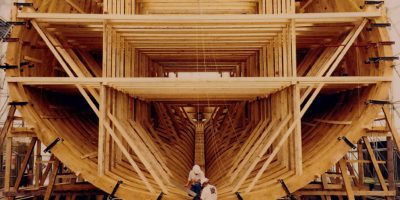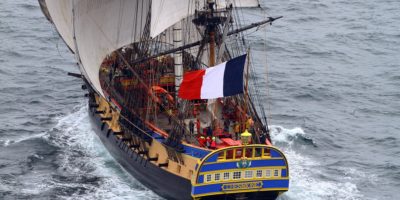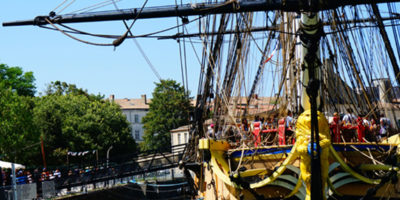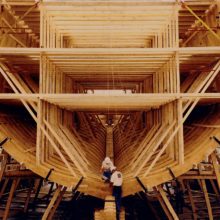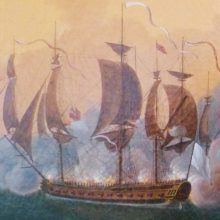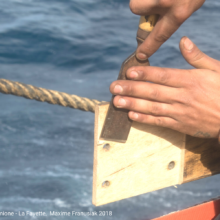In 1992, the Hermione-Lafayette association was founded by a group of maritime history enthusiasts who wanted to construct a frigate identical to a ship that was built at the end of the 18th century, in the heart of the historic Arsenal de Rochefort. The lengthy preparatory process then began with the collection of historical sources, the piecing back together of the ship’s plans, the sourcing of funding, and the launch of a call for tenders to find a builder…
The Centre de Recherche pour l’Architecture et l’Industrie Nautiques (CRAIN) became the prime contractor. They drew up the plans and were responsible for supervising the work. Various expert committees composed of engineers, technicians and historians supported this research work. Following the call for tenders, the Asselin company from Deux-Sèvres was chosen to construct the ship’s framework.
Funds came from the following:
- subsidies from local authorities (the city of Rochefort, the Charente-Maritime department, the Poitou-Charentes region) and the European Union.
- the association’s own revenue through tickets, the shop and memberships
- sponsorship: various regional and national companies had supported this project since its inception.
The construction budget for the ship was around 25 million euros.
The shipyard began work on 4th July 1997, American Independance Day.


